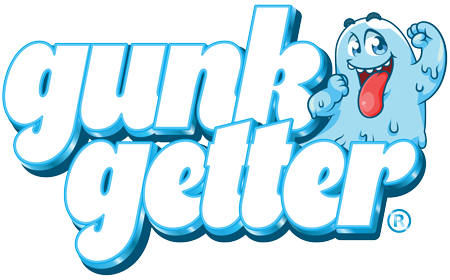Frequently Asked Questions
1. Why is it important to be aware of cleaning product labels?
2. What are active ingredients in cleaning products?
3. How can I identify eco-friendly cleaning products?
4. What should I watch out for in cleaning product labels?
5. What are hazard symbols and why are they important?
In a world where cleanliness and hygiene are more important than ever, the cleaning products you choose can greatly impact your health and the environment. With shelves crowded with various brands promising to get the job done, understanding what to look for on cleaning product labels is crucial. This guide will empower you to make informed choices when selecting cleaning supplies, so you can ensure safety, efficiency, and sustainability in your cleaning routine.
Why Label Awareness Matters
Buying cleaning products without examining the labels can result in unintended consequences, from triggering allergies to exposing your family to harmful chemicals. Label awareness equips you with the necessary knowledge to avoid these issues and choose the safest products available. It allows you to match products with your specific cleaning needs while minimizing the environmental impact. Below are the key elements to focus on when scrutinizing cleaning product labels.
Understanding Common Terminology
The first step in understanding cleaning product labels is to familiarize yourself with common terms and phrases that you might encounter. Here’s a rundown of essential terminology:
Active Ingredients
Active ingredients are the chemical components that directly contribute to a product's cleaning efficiency. Understanding the active ingredients helps you assess the effectiveness of the product. Look for terms that indicate a strong cleaning performance, such as "bleach," "enzymes," and "acidic solutions.”
Fragrance
While a pleasant scent can enhance your cleaning experience, synthetic fragrances can often be harmful. They may cause allergic reactions or respiratory issues for sensitive individuals. Check for products labeled as "fragrance-free" or "naturally scented" to ensure a safer option.
pH Level
The pH level indicates whether a product is acidic, neutral, or alkaline. Understanding this can significantly impact its effectiveness. Generally, alkaline cleaners (pH above 7) are better at cutting through grease, while acidic cleaners (pH below 7) are effective for mineral deposits. Ideally, choose a product that suits the specific cleaning task you have in mind.
Seeking Safer Alternatives
In recent years, there has been a considerable shift toward green cleaning products. As consumers become more eco-conscious, understanding labels that promote safer alternatives has gained importance. Here’s what to look for:
Eco-Friendly Certifications
Look for third-party certifications that reflect a product’s sustainability, such as:
- Green Seal: Ensures the product meets rigorous standards for sustainability and efficacy.
- EPA Safer Choice: Identifies products that are safer for families and the environment.
- USDA BioPreferred: Indicates that a product is made from renewable biological resources.
Natural Ingredients
Products formulated with natural ingredients, such as plant-based surfactants and essential oils, generally pose fewer risks to health and the environment. When reviewing labels, choose products that list natural ingredients and avoid those that contain harsh synthetic chemicals.
Avoiding Red Flags
While many labels are designed to entice buyers with their marketing jargon, it’s essential to be vigilant about what certain terms actually mean. Here are some common red flags to navigate:
"Antibacterial" Claims
Many cleaning products boast antibacterial properties, but often, these claims are overstated. Not only can overuse of antibacterial agents contribute to antibiotic resistance, but they also can disturb the balance of natural microorganisms that are beneficial for health and the environment. Instead, opt for products that do not excessively claim antibacterial effects.
"All-Natural" or "Green" Labels
Claims such as "all-natural" or "green" can sometimes be misleading, as they are not regulated. Always look for specific certifications or check the ingredient list to understand what "natural" actually means.
Understanding Hazard Symbols
Hazard symbols are standardized icons used on product labels to convey specific risks associated with the cleaning product. Familiarity with these symbols can help you take necessary precautions:
- Skull and Crossbones: Indicates toxicity and can be harmful or fatal if ingested or inhaled.
- Flame: Suggests flammability and requires careful storage away from heat sources.
- Exclamation Mark: Signifies that the product can cause irritation to skin, eyes, or respiratory systems.
Creating a Cleaning Product Checklist
When it comes to cleaning products, knowledge is power. Here’s a handy checklist to guide you through your shopping:
Product Purpose
Determine if the product is suited for the specific cleaning task (e.g., bathroom cleaners, kitchen degreasers, floor detergents).
Ingredient Transparency
Does the label provide a full disclosure of ingredients? Products with transparent ingredient lists are generally more trustworthy.
Toxicity Information
Look for information on potential hazards and whether the product is safe for children and pets.
Environmental Impact
Assess the sustainability of the packaging, the sourcing of ingredients, and whether the product is biodegradable.
Making the Right Choice for Your Home and Family
Navigating the myriad of cleaning products available today can be daunting, but knowledge is your best defense. Embracing a mindful shopping approach – one that values ingredient transparency, environmental consciousness, and product efficacy – can help you curate a safe and effective cleaning arsenal. To build a healthy home, always prioritize understanding product labels and choosing wisely. Remember, every conscious decision contributes to a cleaner home and a healthier planet.
Your Next Steps to Cleaner Choices
By understanding cleaning product labels, you open the door to making educated decisions that safeguard your family's health and the environment. Equip yourself with knowledge, and turn your home into a haven of cleanliness, sustainability, and safety. The next time you stroll down the cleaning aisle, let this newfound awareness guide your selections and remember that informed choices are always the best choices for you and your loved ones.


Share:
The Unseen Heroes: Odor Removal in Household Cleaning
Essential Tips for Preserving Furniture During Cleaning